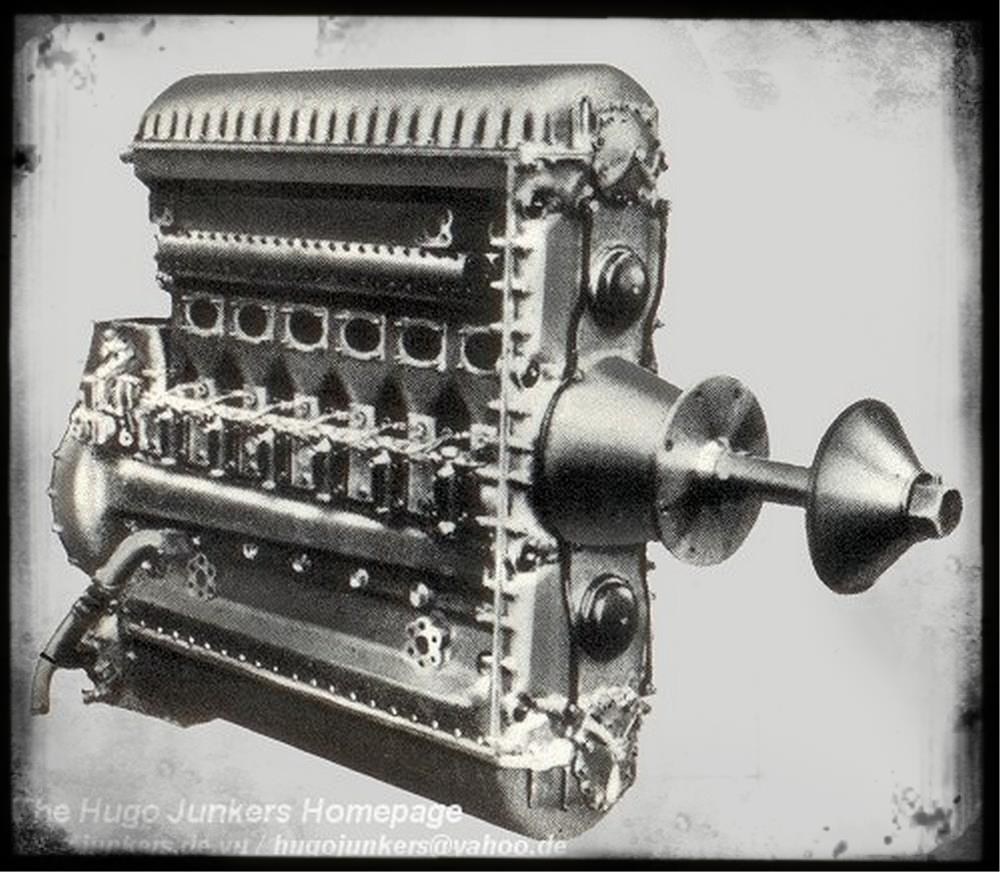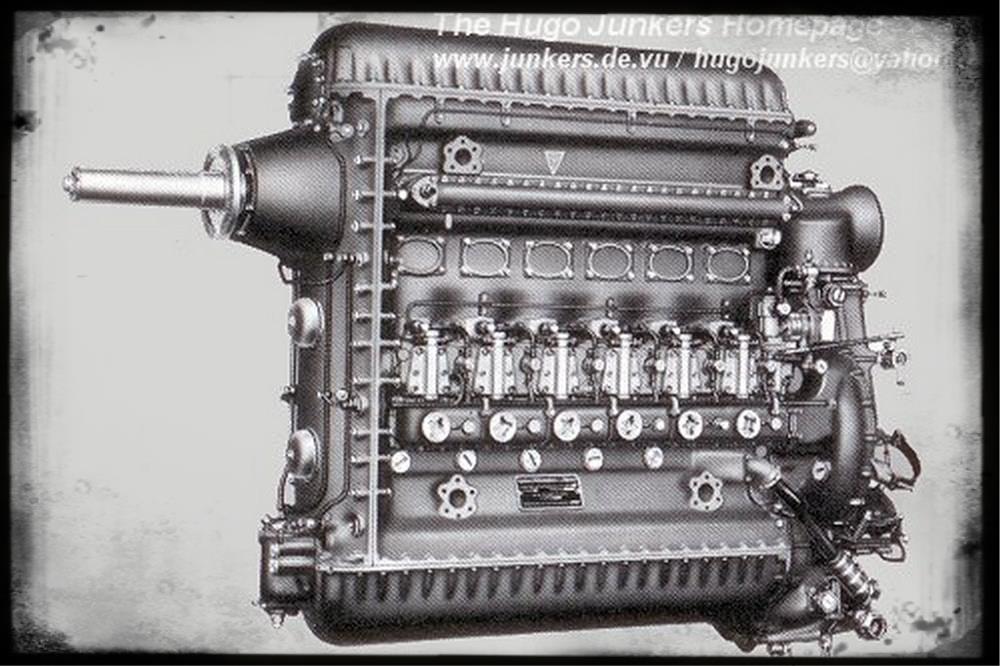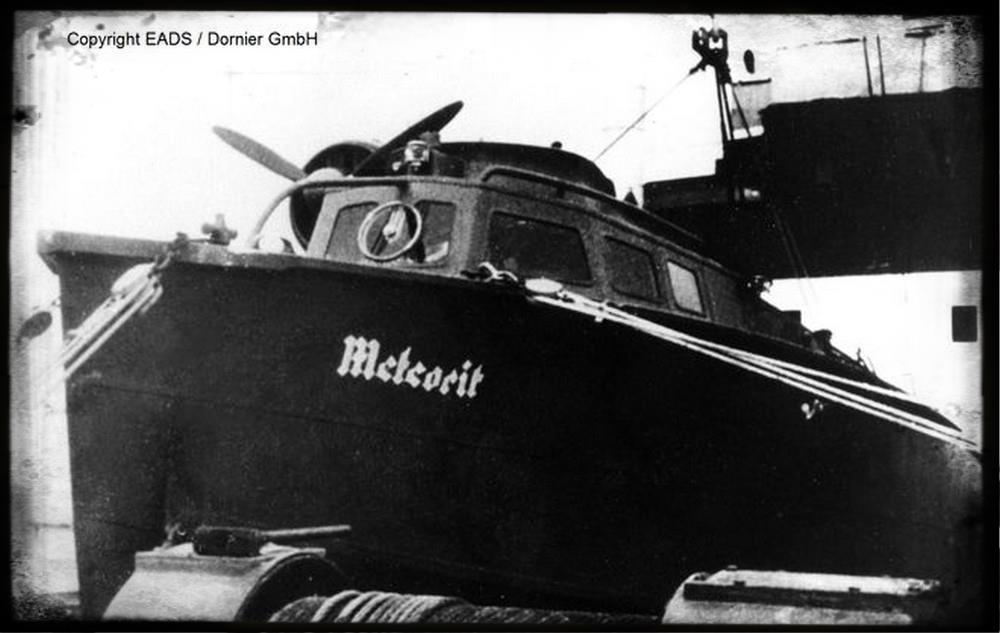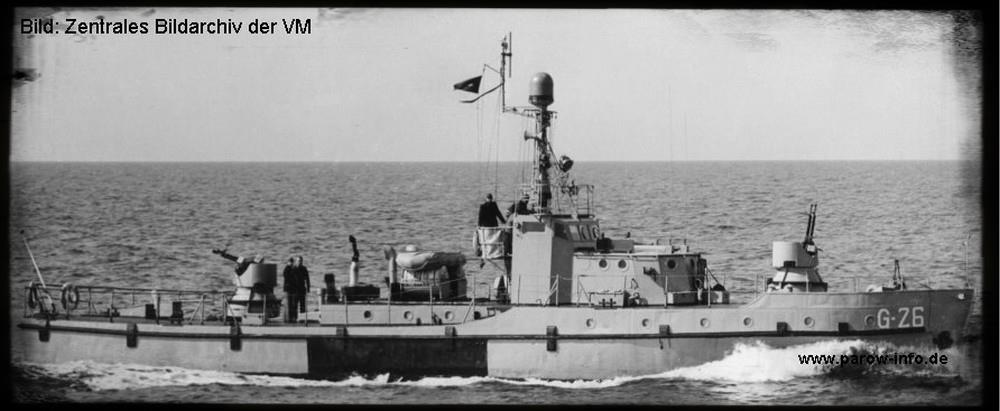Junkers Jumo 205
see also Junkers Jumo 205 Survivors
Six Cylinder, vertical opposed piston, compression ignition, Diesel Oil powered, two stroke

Jumo 5 Engine of 1932
A major problem of the Jumo 204 was the engine size. It was too large for most aircraft of the beginning 30s. Therefore in 1932 the developement of the Jumo 5 was started. It became a smaller derivate of the Jumo 4 with same outside contours but less weight. It became one of the few successfull diesel aircraft engines of the world and it was used on a lot of German aircraft built during the 30s and 40s.
Type approval was achieved in December 1933. First trials were performed with a Focke-Wulf A17 Moewe. Three version of the Jumo 5 were developed and designated as Jumo 5A, 5B and 5C. They mainly differ in different airscrew drives (5A: 0,613 / 5B: 0,602 / 5C: 0,724) All Jumo 5 versions were watercooled. 
Jumo 205C Engine of 1934
In 1934 the Jumo 5 programme was redesignated as Jumo 205. Jumo 205A, 205B and 205C designators were used for Jumo 5A, 5B and 5C and offered only a few technical improvements. Water cooling was also used for Jumo 205A,B,C series 1 to 3. With series 4 a glychole hot cooling was used. The Jumo 205C-4 was also a little bit more powerfull with 450kW T/O Power. While the Jumo 205A and B were only used for experimental tests, the Jumo 205C was the first production engine.
The next development step of the Jumo 205 was the D-series. About 200kW more ground power was achieved by higher turn rates of the engine. Two subseries Jumo 205D-1 and D-2 were developed. This engine was built under license by Napier in England and Lilloise in France, which already built the Fo4 engine under license.
The Jumo 205E again was a less powerfull version compared to the D-series. The turn rate was reduced to 2500 cycles/minute and the ground power was about 515 kW. Two subversion Jumo 205Ea and Jumo 205Eb were built. They were used on the Do26.
The final development step was the Jumo 205G. It was similar to the E-series with several technology improvments. Only a few engines of this type were built.
A total of about 900 Jumo 205 engines were built until the beginning of WWII. The Jumo 205 is still the only successfull Diesel aircraft engine of the world. Most Jumo 205 were mounted to Lufthansa's transatlantic flying boats, i.e. Do18 and Do26. On the long transatlantic routes, the Jumo 205 Diesel engine was a very economic engine due to the low fuel consumption. On the other hand these long range routes with hours of cruise power were an optimum for the Diesel engines. The use of the Jumo 205 in military aircraft, like the Ju86 failed, as these aircraft were used at their power limits, which result in a lot of engine failures.
A second application for the Jumo 205 were naval utilizations. Between 1940 and 1944 several small attack boats for costal operations were built for the German Navy. By the specifications of these boats a Daimler-Benz MB507 engine was requested. These boats were built by Dornier Friedrichshafen. As Dornier had gained good experiences about the Jumo 205 in their aircraft, a proposal was made to equip a few boats with a maritime version of the Jumo 205. Four out of the total number of 12 boats (LS1, LS2, LS5, LS6) were finally equipped with the Jumo 205M engines. LS1 and LS2 were quickly withdrawn from operational tasks due to engine problems. LS5 was used as a patrol boat on Lake Constance for two years and was finally lost by an air attack in 1943, while LS6 was the only Jumo driven attack boat, which was used in operational missions in the Agean Sea, where it also was lost after two years of operation in 1943.

LS2 "Meteorit" Attack Boat with Jumo 205 Engines
The maritime utilization of Jumo 205 engines continued after WWII in the East German Navy. In March 1949 the Soviet Military Administration in Germany (SMAD) advised the setup of the socalled "Kasernierte Volkspolizei". A division of this inital military unit in East Germany was the coast guard, which got 26 boats of the "26 Meters Seekutter"-Klasse between March 1950 and April 1952. These coast guard boats were equipped with three Jumo 205C/D engines. Even if the use of C/D flying engines caused a lot of trouble, these KS-boats remained in service up to the 60s.

NVA Coast Guard Boat Type "Seekutter" with 3 x Jumo 205D
A final application as a maritime power unit was given to the Jumo 205C in the late 50s, when several test boats were built in Eastern Germany to find the best design for future small attack boats. One boat, Project 58 Moewe, got a Jumo 205C which was probably still available from the former KS boats. The boat was built at the Shipyards of Greifswald and was primarily a test object for new structure materials. This test boat was scrapped after the end of the test programme.
Technical Data:
| Engine Designator | year | Cyl. | Bore in mm | Stroke in mm | Volume in litres | Compress. in % | length in m | Height in m | Width in m | Weight in kg | T/O Power in kW | Cruise Power in kW | RPM. | Fuel Consump. g/kWh |
|---|---|---|---|---|---|---|---|---|---|---|---|---|---|---|
| Jumo 5A,B,C Jumo 205A,B,C Jumo 205D Jumo 205E Jumo 205G Jumo 205M | 1932 1934 1934 ???? ???? 1949 | 6 6 6 6 6 6 | 105 105 105 105 105 | 2x160 2x160 2x160 2x160 2x160 | 16,6 16,6 16,6 16,6 16,6 | 17:1 17:1 16,7:1 n.a. n.a. | 1,530 1,943 2,236 n.a. n.a. | 1,320 1,325 1,271 n.a. n.a. | 0,44 0,6 0,645 n.a. n.a. | 510 570 595 n.a. n.a. | 404,5 441,3 647,2 515 515 | 308,9 375,1 478,1 n.a. n.a. | 2100 2200 2800 2500 n.a. | 231,1 ???? 217,5 n.a. n.a. |
Aircraft Types equipped with Jumo 5 / Jumo 205:
Focke Wulf A17c
Two Focke Wulf A17 Moewe passenger airliners (D-1430 and D-1444) were equipped with a Jumo 5B engine for the first time. They were designated A17c and were used on normal flight operations of Luft Hansa They were used to get operational experience about the Jumo 5 engine.
Junkers Ju86 A, B, C, K1, Z1 and D
The Jumo 205 was the standard engine of the initial serial production of the Ju86. Prototypes, bomber and civil passenger airliners up to the D-series were equipped with this engine. Initial series A to C got the watercooled Jumo 205C-3, while D-series got the glycole cooled Jumo 205C-4. Also the export bomber series K1 for Sweden was equipped with this engine, as well as the export airliner Z1 for Switzerland. With introduction of the E-series the engine was changed to BMW132. The high altitude P-series later were equipped again with the Jumo 207. The utilization of diesel engines on serial built aircraft finally did not satisfy the RLM and most aircraft were later reengined with carburetor engines.
Junkers Ju52 3mho
Two Ju52 (D-AJYR and D-AQAR) were equipped with Jumo 205C-3
for experimental flights. Later the center engine was changed to Jumo 206A.
Dornier Do 18 D, E, G, H, N
The Jumo 205 was also the standard equipment of the Do 18. Prototypes and early versions D (surveyer) and E (postal) got the Jumo 205C-3 The later Do18 versions G (surveyer) and N (rescue), as well as the trainer Do18H got the more powerfull Jumo 205D-1 engine.
Dornier Do 24
The further improved Dornier seaplane Do 24 was also intended to be equipped with Jumo 205. Prototypes V1 and V2 got the Jumo 205C-3 engine, while V3 and V4 got the Wright Cyclone. Finally all serial production Do24 got the Wright engine.
Dornier Do 26
The next improved Dornier seaplane Do 26 again got the Jumo 205. The transatlantic postal seaplanes V1 to V3 got the high improved Jumo 205E engines, while the later Luftwaffe freighters Do26c were equipped with the Jumo 205D in 1940
Heinkel He 120
In 1938 Heinkel was studying an approach for a transatlantic passenger seaplane. This design, the He 120, should also be equipped with four Jumo 205 engines. Finally the design was stopped as Blohm & Voss won the competition with the BV222.
Blohm & Voss BV138 A, B, C
Originally the flying boat BV138 was designed for the BMW115 or the Jumo 206. But as those aircraft did not achieve production status, finally the design was changed to Jumo 205. The initial A-series were equipped with Jumo 205C-4, while the B- and C-series got the Jumo 205D-1 engine.
Blohm & Voss BV139
Another Blohm & Voss aircraft equipped with the Jumo 205 was the BV139 postal seaplane.
A total of 3 BV139 were built, all equipped with the Jumo 205C-4.
Weblinks:
- Wikipedia.org - Jumo 205 Story, Data, photos
- inter.action.free.fr - Jumo 205 large cut away drawing
- EngineHistory.org - Jumo 205 Article Extract
introduced Nov 1996, transfered Aug 2017
http://hugojunkers.bplaced.net/
contents last updated 31 Dec 2003

